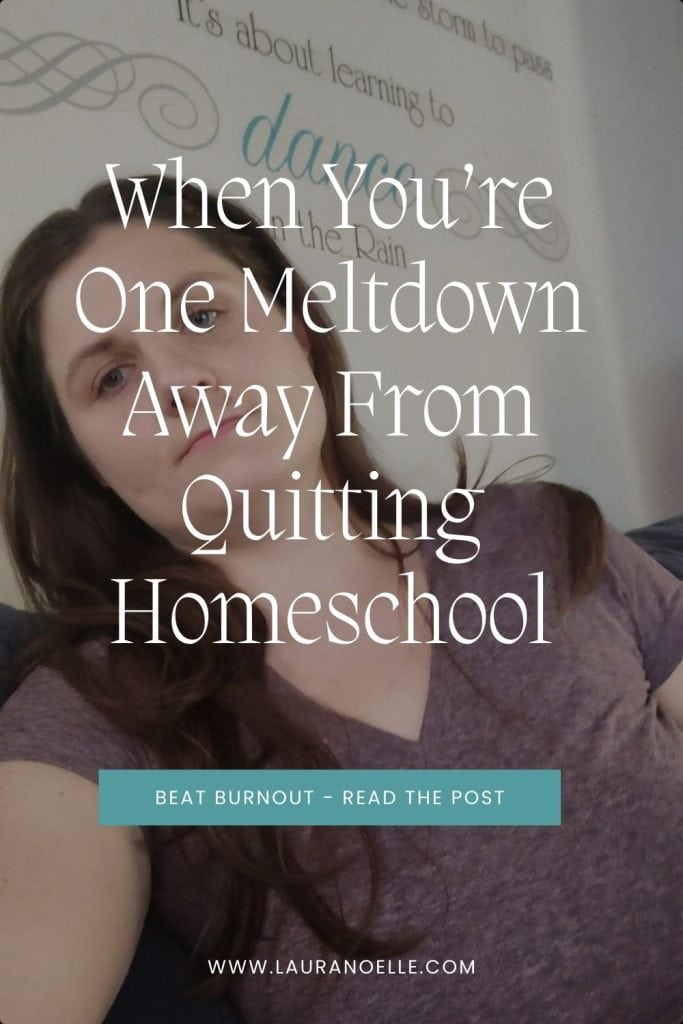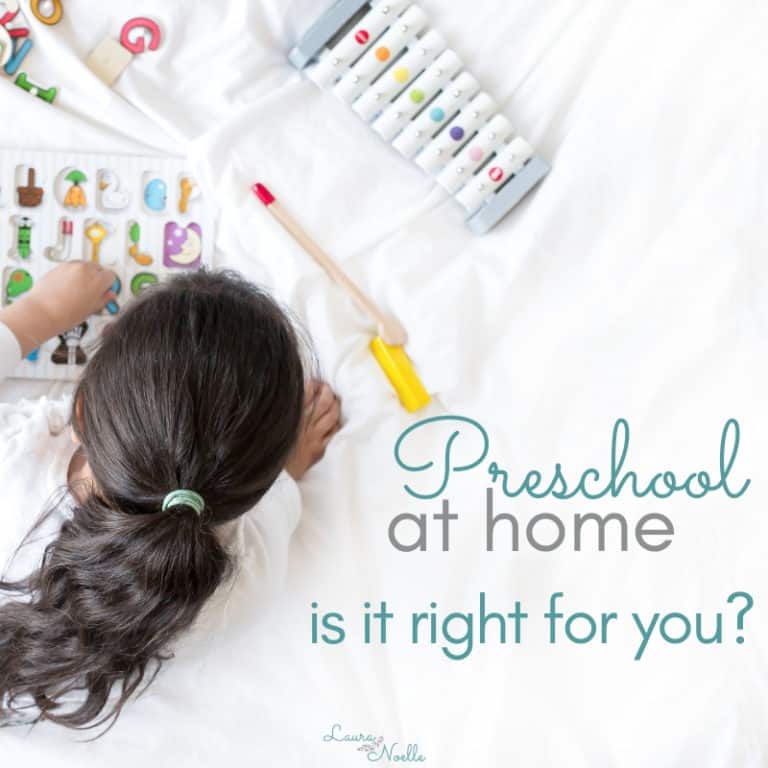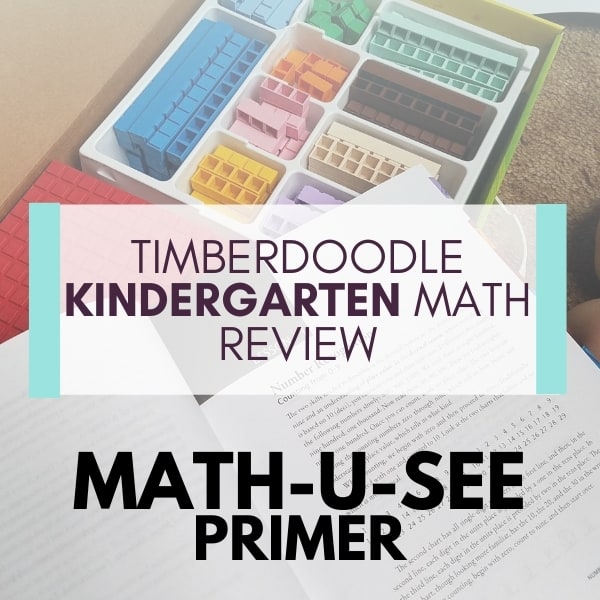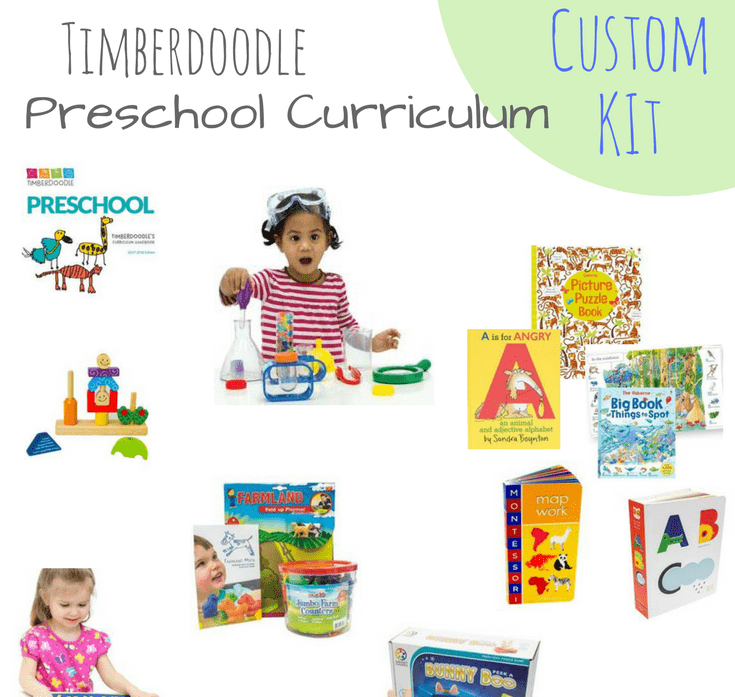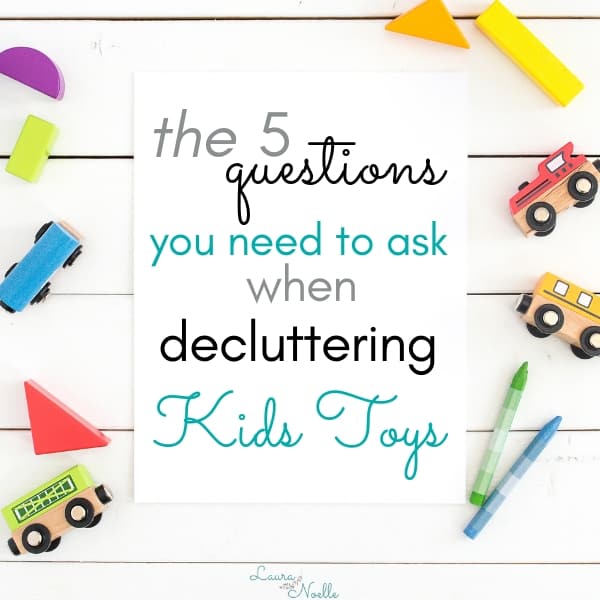When You’re One Meltdown Away from Quitting Homeschool: A Real Mom’s Guide to Beating Burnout
This post may contain affiliate links, which means I may receive compensation if you make a purchase using one of these links.
Mama, if you clicked on this post because the title made your heart skip a beat… I see you.

If you’re reading this while hiding in your bathroom after another chaotic homeschool morning, wondering if you’re completely ruining your kids’ education and maybe—just maybe—thinking that traditional school is starting to look pretty good right about now… you’re not alone. And you’re definitely not failing.
The truth? Nearly half of all teachers—44%—report feeling burned out often or always, according to recent studies. And honey, that’s people who went to school for this and get paid to do it. You’re doing this because you love your kids, often with zero formal training, while also managing a household and probably a dozen other responsibilities.
Today we’re diving deep into homeschool burnout—the real, raw, messy truth about it—and more importantly, how to climb out of it without throwing in the towel.
The Homeschool Burnout Crisis No One Talks About
Burnout is everywhere in the homeschool community right now. I see moms in Facebook groups saying things like “I love my kids, but I don’t know if I can do this anymore.” “Everything feels too hard.” “Maybe I’m just not cut out for homeschooling.”
There’s this guilt cycle happening where moms feel unappreciated for their homeschool efforts, then feel guilty for feeling unappreciated. The conversations are breaking my heart because I know these are good moms who just need the right systems.
Here’s what I want you to know: burnout doesn’t mean you’re failing. It means you’re human.
But here’s my take on this whole burnout conversation that might surprise you: most of the advice out there treats the symptoms, not the root cause. Everyone’s telling you to take a bubble bath or go get coffee with friends—and sure, those things are nice. But if you come home to the same chaotic systems and overwhelming environment, you’re right back where you started.
Real burnout recovery? It starts with simplifying your systems so you can finally breathe.
What Real Homeschool Burnout Actually Looks Like
Let me get real with you for a minute. Burnout isn’t just about being tired—we all get tired. It’s not even about having hard days, because every homeschool mom has those.
Homeschool burnout is when:
- You wake up and the thought of starting another homeschool day makes you want to crawl back under the covers
- You’re snapping at your kids over math problems and feeling guilty about it five minutes later
- Every curriculum choice feels wrong, and you’re convinced your neighbor who sends her kids to public school has it all figured out
- You feel like you’re drowning in supplies, papers, and chaos every single day
But here’s what nobody talks about: most homeschool burnout isn’t actually about the homeschooling. It’s about the chaos surrounding the homeschooling.
Think about it. When you can’t find the math book, when the dining room table is covered in yesterday’s art project and this morning’s breakfast dishes, when you’re constantly hunting for pencils and the baby is melting down while you’re trying to explain fractions to your eight-year-old… that’s not really about the curriculum, is it?
That’s about systems. Or the lack of them.
I’ve been coaching overwhelmed homeschool moms for years now, and I can tell you—the moms who recover from burnout fastest aren’t the ones who take longer vacations or buy new curriculum. They’re the ones who get honest about the chaos in their homes and decide to do something about it.
The Hidden Cost of Clutter on Your Homeschool Mental Health
I hear this from clients all the time. They come to me convinced that they’re terrible homeschool moms. Their kids are behind in multiple subjects, they’re yelling more than teaching, and they’re seriously considering enrolling them in the local school.
But when I dig a little deeper, I usually see the problem immediately. It’s not about the mom or the kids—it’s usually the room.
When the space is drowning in stuff—curriculum piled up, art supplies scattered on the floor, papers sliding off the desk, toys everywhere—it’s no wonder that the kids can’t focus and mom is stressed out.
Here’s what Harvard Medical School research tells us about clutter and stress: when our brains are constantly processing visual chaos, our cortisol levels stay elevated. That’s your stress hormone. And elevated cortisol doesn’t just make you feel overwhelmed—it actually impairs your ability to think clearly, be patient, and make good decisions.
If you feel like you’re failing at homeschooling, make sure your environment isn’t working against your success.
The Myth of “More Organization”
Here’s where most moms get it wrong. When we feel overwhelmed by clutter, our first instinct is to buy more bins, more labels, more organizational systems. Sound familiar?
Here’s the truth that’ll save you hundreds of dollars and hours of frustration: you cannot organize clutter. You can shuffle it around, put it in prettier containers, and label everything perfectly—but if you have too much stuff, you’ll always feel overwhelmed.
The solution isn’t better organization. It’s less stuff.
The first thing I do with clients is declutter—not organize, declutter. We go through every single curriculum, every art supply, every educational game, and we ask one simple question: “Is this serving our family right now?”
Not “will we use this someday” or “but it was expensive” or “but it’s such a good resource.” Is it serving your family right now?
I’ve helped families declutter 50% of their homeschool supplies and seen incredible results. Kids can focus better. Moms stop yelling. Homeschool actually starts working. The environment changes everything.
Why Your Daily Rhythms Matter More Than Your Curriculum
Now, let’s talk about the second piece of beating burnout—and this one might surprise you.
Your daily rhythms matter more than your curriculum choice.
I don’t care if you’re using the most expensive, comprehensive curriculum on the market. If your days feel chaotic, if you’re constantly behind, if you never know what’s supposed to happen when—you’re going to burn out.
But here’s the thing about rhythms that most homeschool moms miss: rigid schedules don’t work for real families. Life happens. Kids get sick, the baby doesn’t nap, the washing machine floods your laundry room. When your entire homeschool depends on everything going exactly according to plan, you’re setting yourself up to feel like a failure every single day.
What you need is flexible structure. Think of it like the frame of a house—it gives you boundaries and support, but there’s room to move around inside.
The Power of Anchor Points
Instead of scheduling every minute of your day, try this: create three anchor points.
Morning Launch: This is how you start every homeschool day. Maybe it’s everyone getting dressed and making their beds, then gathering at the kitchen table for breakfast and a read-aloud. The same sequence, every day, so your kids know what to expect.
Learning Block: This is your focused homeschool time. Not necessarily the same time every day, but the same basic flow. Maybe it’s math first while everyone’s fresh, then a break, then language arts.
Evening Reset: This is how you close out your homeschool day and prepare for tomorrow. Everyone puts away their materials, you tidy the learning space, and you do a quick prep for the next day.
Three anchor points. That’s it. Everything else can be flexible.
Here’s why this works: your kids crave predictability, but they also need grace for real life. Anchor points give them the security of knowing what’s coming next, without the pressure of a minute-by-minute schedule that makes everyone stressed when life happens.
The Mindset Shift That Changes Everything
We’ve talked about decluttering your space and creating flexible rhythms. But there’s one more piece to beating burnout, and it’s the most important one: your mindset.
Most burned-out homeschool moms are carrying around this story that they’re not doing enough. Not teaching enough subjects, not using enough curriculum, not providing enough opportunities, not being enough.
And that story is killing your joy.
Can I tell you something that might change everything for you? Your kids don’t need more. They need better.
- They don’t need seventeen different science experiments this week. They need one really good one that you’re excited to do with them.
- They don’t need to be ahead of every kid in their grade. They need to be growing at their own pace, with a mom who believes in them.
- They don’t need Pinterest-perfect homeschool rooms. They need spaces where they can think clearly and work peacefully.
The Power of “Good Enough”
I want to introduce you to a phrase that’s going to save your sanity: “good enough.”
- Good enough math lessons that get completed consistently beat perfect math lessons that stress everyone out.
- Good enough organization that everyone can maintain beats perfect systems that only work when mom is micromanaging.
- Good enough days where everyone feels loved and learns something beat perfect days that leave everyone exhausted.
This isn’t about lowering your standards. It’s about raising your awareness of what actually matters.
Your kids are watching you model how to handle stress, how to solve problems, and how to treat yourself when things don’t go perfectly. What lesson do you want them to learn?
Three Simple Steps to Beat Burnout This Week
Okay mama, let’s get practical. If you’re feeling burned out right now, here are three things you can do this week to start turning things around:
Step 1: Clear One Space Completely
Pick one small space in your homeschool area—maybe it’s a bookshelf, maybe it’s your desk, maybe it’s the art supply cabinet. Just one space.
Remove everything. Wipe it down. Put back only what you’re using right now, this month. Put items that you might use in the future in a separate teacher storage area. Everything else that you’re not sure about goes in a box labeled “homeschool maybe” with today’s date on it.
If you don’t open that box in three months, donate it without looking inside. You won’t miss it.
This isn’t about perfection. It’s about creating one space that feels calm and manageable. One space where your brain can rest.
Step 2: Create a Simple Morning Rhythm
Tomorrow morning, try this simple sequence:
- Everyone gets dressed and makes their bed
- Gather for breakfast (doesn’t have to be fancy)
- Start with something you all enjoy—maybe a short read-aloud or educational video
- Move into your first subject
That’s it. Same sequence every day for one week. Don’t worry about timing, don’t worry about making it perfect. Just follow the same order and notice how it feels.
Step 3: End Each Day with Grace
Before bed every night this week, ask yourself: “What went well today?” Not what went wrong, not what you didn’t get done. What went well?
Maybe your daughter finally understood long division. Maybe your son read a whole chapter without complaining. Maybe nobody cried during math. Maybe you kept your patience when things got chaotic.
Write it down. Train your brain to notice what’s working instead of what’s broken.
When the System Actually Sticks
Here’s what I’ve learned from working with hundreds of overwhelmed homeschool moms: lasting change doesn’t come from doing more. It comes from doing less, better.
The moms who beat burnout and stay motivated aren’t the ones with the most elaborate systems or the most expensive curriculum. They’re the ones who figured out what truly matters to their family and let go of everything else.
They have:
- Fewer books on their shelves, but they actually use the ones they keep
- Simpler daily rhythms, but they follow them consistently
- Lower expectations for achievement, but higher expectations for their family’s peace and joy
And you know what? Their kids are thriving. Not because they’re doing more, but because they’re doing what matters, with less stress and more intention.
Your Next Step Toward Homeschool Peace
Friend, if you’re reading this because you’re struggling, I want you to know something: the fact that you care enough to look for solutions means you’re already a good homeschool mom.
The fact that you want better for your kids, that you’re willing to examine your systems and make changes, that you’re fighting for your family’s peace—that’s not what failing moms do. That’s what loving moms do.
Burnout isn’t a character flaw. It’s not proof that you’re not cut out for homeschooling. It’s feedback. It’s your heart and your body telling you that something needs to change.
And the beautiful thing about homeschooling? You get to decide what that change looks like.
You don’t have to overhaul everything at once. You don’t have to have it all figured out by next week. You just have to take one small step toward simplicity.
Clear one space. Create one simple rhythm. End one day with grace.
Start there. Build from there. And remember—your homeschool deserves more peace, and so do you.
Ready to create systems that actually stick? Download my free “Homeschool Simplicity Staples” guide –six sanity-saving tools that will help you kickstart your homeschool organization without the overwhelm.

You’ve got this, mama. One simple step at a time.
